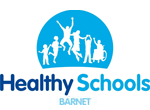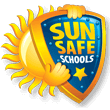Online Safety
E-Safeguarding and Digital Literacy
The Internet is expanding and developing at an unprecedented rate and it is a difficult job to keep on top of developments in order to ensure the safety of our children whilst they are online. We can control the access our children have in their ‘offline’ lives by limiting their access to the television, choosing suitable books for them to read and teaching them ‘stranger danger’. In their ‘online’ lives however things that we wouldn’t dream of allowing them to view can be a click away. That is unless we are aware of social media, chat rooms, explicit websites etc.
There are many ways that we can educate ourselves as parents, teachers and the wider educational community. The following is a check list from Thinkuknow the online resource for parents and teachers.
Talk to your child about what they’re up to online. Be a part of their online life; involve the whole family and show an interest. Find out what sites they visit and what they love about them, if they know you understand they are more likely to come to you if they have any problems.
Watch Thinkuknow films and cartoons with your child. The Thinkuknow site has films, games and advice for children from five all the way to 16.
Encourage your child to go online and explore! There is a wealth of age-appropriate sites online for your children. Encourage them to use sites which are fun, educational and that will help them to develop online skills.
Keep up-to-date with your child’s development online. Children grow up fast and they will be growing in confidence and learning new skills daily. It’s important that as your child learns more, so do you.
Set boundaries in the online world just as you would in the real world. Think about what they might see, what they share, who they talk to and how long they spend online. It is important to discuss boundaries at a young age to develop the tools and skills children need to enjoy their time online.
Keep all equipment that connects to the internet in a family space. For children of this age, it is important to keep internet use in family areas so you can see the sites your child is using and be there for them if they stumble across something they don’t want to see.
Know what connects to the internet and how. Nowadays, even the TV connects to the internet. Make sure you’re aware of which devices that your child uses connect to the internet, such as their phone or games console. Also, find out how they are accessing the internet – is it your connection, or a neighbour’s wifi? This will affect whether the safety setting you set are being applied.
Use parental controls on devices that link to the internet, such as the TV, laptops, computers, games consoles and mobile phones. Parental controls are not just about locking and blocking, they are a tool to help you set appropriate boundaries as your child grows and develops. They are not the answer to your child’s online safety, but they are a good start and they are not as difficult to install as you might think. Service providers are working hard to make them simple, effective and user friendly. Find your service provider and learn how to set your controls.
Do your children play Fortnite – Battle Royale?
You may have come across your child talking about the game Fortnite. As with many online games, Fortnite: Battle Royale comes with risks to children and young people. The game is PEGI rated at 12+ however, there is no proof of age required, which can expose younger children to violent content as well as inappropriate comments from older users. Please click on the links below for more information about the game to help you keep child safe online.
Fortnite-parents-guide-leaflet
Fortnite battle royale guide
For more information about PEGI rated games please visit http://www.pegi.info
The online magazine Digital Parenting is an excellent resource that offers advice on how to manage your children’s devices including smartphones, tablets and games consoles.
 We would recommend that you talk to your child about CEOP. This is a button that they can click on to report anything that makes them feel scared or unsure. Sometimes they may have stumbled onto a site that they shouldn’t see or may be wary about questions they are being asked in a chat room. This button links them directly to a CEOP (child exploitation and online protection) team member who can help them. As part of our E-Safeguarding lessons we have taught the children about this as well.
We would recommend that you talk to your child about CEOP. This is a button that they can click on to report anything that makes them feel scared or unsure. Sometimes they may have stumbled onto a site that they shouldn’t see or may be wary about questions they are being asked in a chat room. This button links them directly to a CEOP (child exploitation and online protection) team member who can help them. As part of our E-Safeguarding lessons we have taught the children about this as well.
At St Theresa’s, we take E-Safeguarding seriously. We expect the staff, parents and pupils to agree to our online code of conduct and talk regularly with the children about how to stay safe online.
Click here to view our Parents’ Internet Safety Evening presentation
Here are some useful websites that help provide further information about how to keep children safe whilst online:
https://www.internetmatters.org
https://nationalonlinesafety.com/
https://www.nspcc.org.uk/preventing-abuse/keeping-children-safe/online-safety/
If you have any concerns regarding your child’s online activity or want to report anything, the schools Online-Safeguarding lead is Miss Costa.







